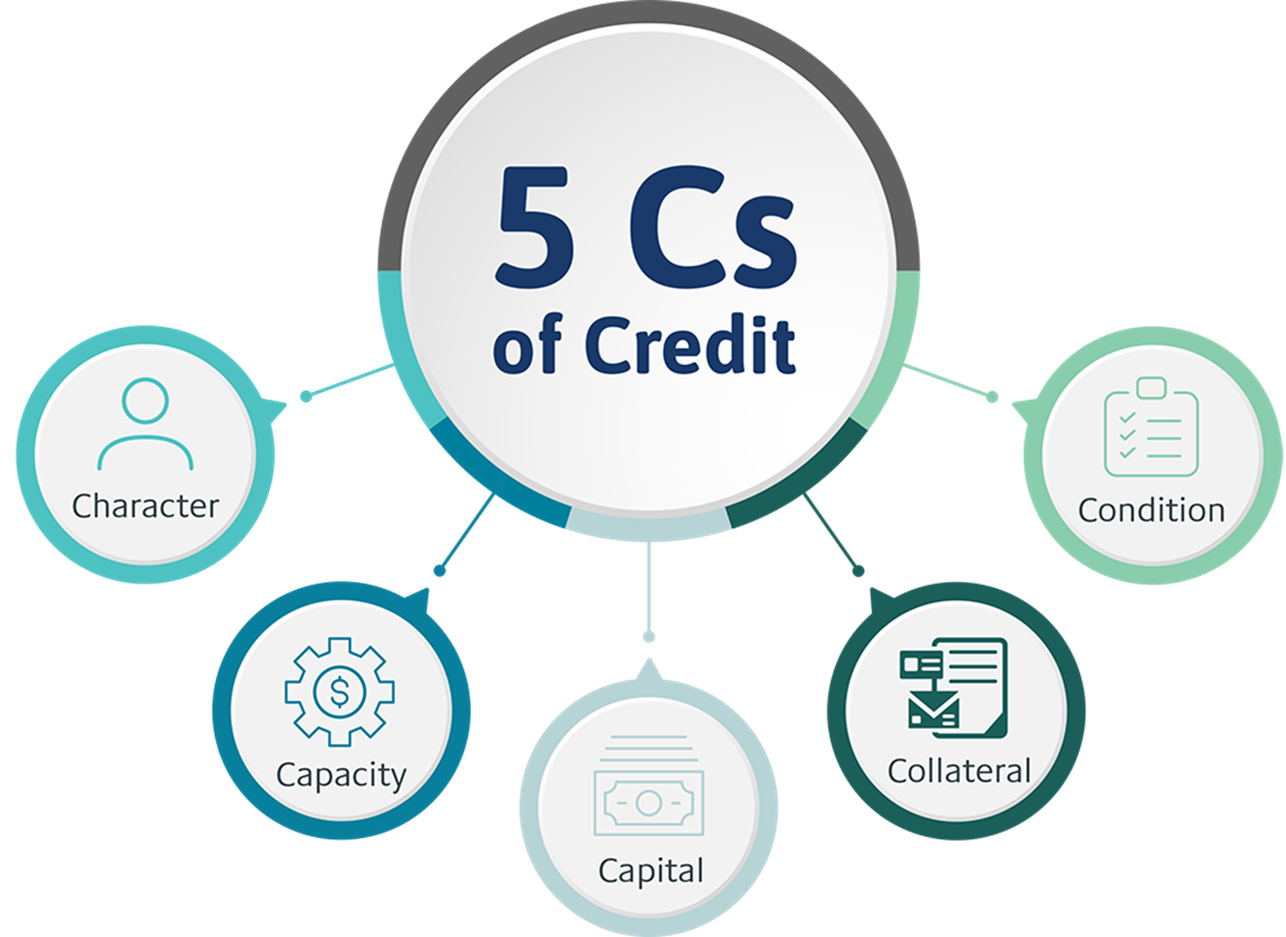Navigating the Lending Landscape: Understanding the 5 Cs of Credit for Small Business Financing

Securing a business loan is a pivotal step for any small business owner looking to expand, invest in new equipment, or simply manage the ebb and flow of their operations. However, the process of getting approved for a loan can often feel like navigating through a maze, with various factors influencing the lender’s decision. At the heart of this decision-making process are the 5 Cs of Credit. Understanding these criteria can significantly enhance your loan application experience by giving you insight into what lenders are looking for.

1. Character: Understanding Creditworthiness
Character refers to a borrower’s credit history or the track record of repaying debts. Lenders use credit reports and FICO scores as standardized tools to gauge an applicant’s reliability. Your credit score serves as a numerical summary of your creditworthiness, influencing not only the approval of your loan but also the interest rates you’ll be offered. Essentially, a higher FICO score translates to lower risk for the lender, which can result in more favorable loan terms for the borrower.
For further reading and to explore resources from credit bureaus and financial planning tools, consider visiting Experian, TransUnion, and Equifax.
Tip for Small Business Owners: Regularly review your credit report for inaccuracies and work diligently to settle any outstanding debts. Building a solid credit history is a marathon, not a sprint. Start now, and over time, your business will benefit from more attractive financing options.
2. Capacity: Demonstrating Your Ability to Repay
Capacity assesses whether a business generates enough cash flow to cover new debt payments on top of existing obligations. This aspect of credit assessment puts the phrase ‘cash is king’ into perspective. Lenders will scrutinize your financial statements, particularly tax returns and profit-loss statements, to ensure that your business guarantees enough cash flow to cover existing debts as well as any new loans. Strong, consistent cash flow is a good indicator of a business’s capacity to handle debt, making it a crucial factor in the lending decision.
Tip for Small Business Owners: Ensure your financial documents are in order, up-to-date, and accurately reflect your business’s cash flow. Consider ways to boost revenue or cut unnecessary expenses to improve your cash flow position before applying for a loan.
3. Capital: The Role of Cash Reserves
In the context of the 5 C’s, capital refers to the financial resources a business has on hand. Lenders look at a company’s capital to determine its ability to sustain operations and weather periods of financial difficulty. This includes evaluating whether a business has sufficient funds for a down payment and if it possesses a reasonable cash reserve or “rainy day fund.” The liquidity of a company, often measured by how many months of debt payments it can cover with its current cash reserves, is a key consideration for lenders.
Tip for Small Business Owners: Prioritize building a robust financial cushion. This not only positions your business as a more attractive loan candidate, but also provides you with a safety net should unexpected challenges arise.
4. Collateral: Securing Your Loan
Collateral is the security or asset that a borrower offers to a lender to secure a loan. It might be real estate, equipment, or inventory, depending on the type of loan. In the event of a default, the lender has the right to seize the collateral to recoup their losses. While some loans are unsecured and do not require collateral, these are typically reserved for borrowers with strong credit, solid cash flow, and substantial resources. The presence and value of collateral are significant factors in the lending process, influencing both the approval of the loan and its terms.
Tip for Small Business Owners: Be prepared to discuss what assets can be used as collateral during the loan application process. Remember, pledging collateral involves risk, so carefully consider the implications for your business.
4. Conditions: The Bigger Picture
Finally, conditions encompass the external factors that might affect a borrower’s ability to repay a loan. This includes the overall economic climate, industry trends, market competition, and geopolitical events. Lenders assess these conditions to evaluate the level of risk associated with lending to a particular business in its specific context. A deep understanding of both the borrower’s industry and the broader economic environment is essential for lenders when making this assessment.
Tip for Small Business Owners: Stay informed about your industry and the broader economy and be ready to address any potential concerns lenders might have about current or future conditions affecting your business.
Tip for Small Business Owners: Stay informed about your industry and the broader economy and be ready to address any potential concerns lenders might have about current or future conditions affecting your business.
Preparing for Success
Understanding the 5 Cs of Credit is crucial for any small business owner looking to secure financing. It provides a framework for both evaluating your readiness to apply for a loan and improving your financial health. At Park View, we employ industry-standard metrics to assess loan applications, recognizing the unique aspects of each borrower. By aligning your business practices with these criteria, you can enhance your loan application and move closer to achieving your financial goals.
Remember, understanding the lender’s perspective and preparing accordingly can make all the difference in securing the small business financing you need. Whether you’re seeking to expand your operations, invest in new technology, or manage day-to-day expenses, a solid grasp of the 5 Cs of Credit will set you on the path to achieving your financial goals.
Share This
You May Also Like
Navigating Holiday Loans: A Financial Guide for the Festive Season
Make the Most of Your Holidays with Holiday Skip-a-Pay!
A Guide to Understanding Credit Scores
Want to learn more?
Discover additional resources and other financial topics by visiting our Financial Education Center.

 Now Park View makes it even easier to schedule an appointment with one of our service representatives.
Now Park View makes it even easier to schedule an appointment with one of our service representatives.

